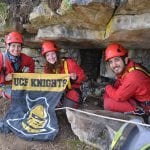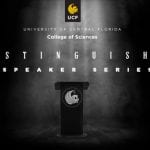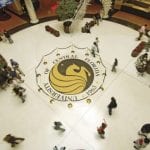Biography
I am a biological anthropologist who specializes in bioarchaeology, human skeletal biology, paleopathology, and stable isotope science. My primary area of investigation is Andean South America, where I engage in contextually-based research focusing on the analysis of ancient skeletal and mummified remains, in order to explore broader anthropological interests including: the biocultural identification of violence and warfare, ritual activities, ethnic identity, mortuary complexity in ancient civilizations, and Andean prehistoric and Contact period social interactions.
I earned my B.A. and M.A. from the University of Western Ontario, London, Ontario. My Ph.D. degree was awarded from Tulane University in New Orleans, Louisiana. I pursued anthropological post-doctoral research at the University of Western Ontario in the Laboratory for Stable Isotope Science. My research has been supported by awards from NSF (National Science Foundation), the National Geographic Society, Rust Family Foundation, Petzl Foundation, and SSHRC-Canada.
Currently, I am a professor at UCF teaching both undergraduate and graduate level courses in various topics including bioarchaeology, human osteology, stable isotopes, and anthropological explorations of violence and death. I consistently bring students with me to Peru for field experiences in osteological lab activities and archaeological excavations.
Throughout this introduction I think it is pretty clear that I am passionate about my work both in terms of teaching and research. I knew from a very young age that I loved culture, history, and travel, and thus, anthropology was a natural combination of these things. But anthropology is so much more and can be integrative and exploratory. I approach my work holistically seeing that questions can be approached from many different angles and using various interconnected lines of evidence. I rely heavily on collaborations and look forward to meeting new colleagues.
Research Goals:
- Osteological analysis of human remains from archaeological and forensic contexts
- Andean paleopathology – patterns of biological health status, demography and disease in central Andean region of South America
- Violence – skeletal trauma, massacres, human sacrifice
- Identity – osteological patterns marking collective experience, biodistance using metric and non-metric analyses of skeletal characteristics, as well as mortuary treatment
- Biogeochemical analysis of human remains – dietary and mobility reconstructions using individual and community patterns – work in Peru, Guatemala, and Croatia
Research
Research Links:
Laboratory for Bioarchaeological Sciences
Field work Opportunities
UCF Study Abroad program in Croatia (2022)
Current Projects:
Túcume Biorchaeological Project – Skeletal Biology and Mortuary Variation
Life and Death at Túcume, Lambayeque: Monuments of Ritual and Sacrifice
Beginning in 2001 with my Masters research, I have been participating in ongoing archaeological research at Túcume, Lambayeque Valley (northern coast of Peru). At this large multi-component archaeological complex (A.D. 1000-1532), we collaborate with site archaeologists excavating tombs from cemeteries, as well as identifying human and animal burials from within architecture. Work focuses on human osteology analyzing skeletal patterns in demography, morphology, diet, dental health, pathology, trauma, and biodistance (population history).
With training and funding, students have joined this fieldwork and lab work based project.
Chachapoya Bioarchaeology – Mortuary Patterns and Population Biohistory Project
The World Above and Below: The Living and the Dead in Chachapoya Mortuary Landscapes
Since 2004, I have been the physical anthropologist responsible for the analysis of human skeletal remains recovered from the archaeological excavations at the prehispanic site of Kuelap, located on the eastern slopes of the Chachapoyas region of Peru – department of Amazonas. Frequently called a “fortress” this massive archaeological complex has been the focus of great interest and speculation for over 150 years. Recent archaeological, conservation and touristic investment have strengthened our ability to investigate recovered materials from the site and to assess the impact archaeology has on the local communities.
In collaboration with Peruvian and Spanish colleagues, we use vertical climbing techniques to explore how the location of mortuary structures reflects the nature of social relationships among different groups, their ancestors and the living landscape. In a physically challenging environment, the Chachapoya risked their lives to build elaborate tombs and regularly inter their dead on vertical cliffs. We explore innovative techniques to reach, explore, map, record, and analyze these mortuary structures. Osteological analysis of the recovered skeletal and mummified remains provides a window into the lives of the individuals who were deposited and archaeological investigation of the mortuary structures helps identify the material and symbolic expression of identity.
Chachapoya Stable Isotope Project – CHIP
This project uses the analysis of stable isotopes (C, N, and O) to explore dietary variation and population residential histories from regional sites, centers, and different mortuary contexts from Chachapoya. Similar to the work begun on the coast at Moche we are working to increase access to previously excavated materials with good provenience as well as testing less well provenience materials. Initial work looks at exploring sample preservation, range of variation, and establishing local baselines using local floral, faunal, and water samples.
The Chachapoya region stands as a dynamic and challenge environment for these types of analysis due to the nature of the climate and topography as the vertical landscape cuts ecological zones and larger continental precipitation and environmental changes have shaped the history of human ecology.
Moche Isotope Project – Stable Isotopic Analysis of Diet and Mobility
Landscape and Identity among the pre-Hispanic Moche on the North Coast of Peru
This investigation used the biochemical analysis of bone and teeth to reconstruct stable isotopic compositions of paleodiet and mobility to investigation population health and dynamics at several Moche occupations along the north coast, notably the complex urban center of Huacas de Moche. The early state-like Moche society demonstrates clear evidence of hierarchical social differentiation through complex mortuary rituals. Evidence of human sacrifice found at Huacas de Moche indicates a long tradition of complex peri- and postmortem manipulation of human bodies. Stable isotopes provide direct evidence of differences in dietary sources and preferences, as well as life history shifts in oxygen and strontium isotope values that allow us to interpret the patterns of population movement in the Moche center as well as identify possible origins of the sacrificed individuals.
This work was part of major on-going collaboration with The University of Western Ontario (Drs. Christine White, Fred Longstaffe, Andrew Nelson and Jean Francois Milliare) and Arizona State University (Dr. Kelly Knudson). It is funded in part by grants to Dr. White (SSHRC Research Grant no. 332337) and Dr. Toyne (SSHRC PostDoctoral Fellowship Award No. 756-2010-0739).
Croatia Bioarchaeology and Stable Isotope Collaborations – various collaborations
Avar Period Mobility and Dietary Change
This investigation used the biochemical analysis of bone and teeth to reconstruct stable isotopic compositions of paleodiet and mobility to investigation population health and dynamics at several Avar period sites along the Danube River in Central Europe.
This work was part of major on-going collaboration with the Institute for Anthropological Research, Zagreb (Dr. Mario Novak), as well as various other colleagues in Hungary and Serbia, which has been funding by the Croatian National Academy of Sciences.
Students (undergraduate and graduate students) regularly volunteer in the Laboratory for Bioarchaeological Sciences working with samples preparation techniques for this project and others.
Key Publications
Edited Book:
| 2016 | Klaus HD, Toyne JM (editors). Ritual violence on the North Coast of Peru: Archaeological studies of sacrifice in the ancient Andes. Austin: University of Texas Press. http://www.utexaspress.com/index.php/books/klaus-toyne-ritual-violence-in-the-ancient-andes |
Articles and Chapters:
| 2022 | Dewitte S, Buikstra JE, Goldstein L, Agarwal SC, Baker B, Bartelink E, Berger E, Bolhofner K, Boutin A, Brickley M, Buzon M, De la Cova C, Gowland R, Grauer A, Gregoricka L, Halcrow S, Hillson S, Kakaliouras A, Klaus HD, Knudson KJ, Knüsel C, Larsen CS, Martin DL, Novak M, Nystrom K, Prowse T, Robbins Schug G, Roberts C, Santos L, Stojanowski, Stone A, Skull K, Temple D, Torres C, Toyne JM, Tung TA, Ullinger J, Wiltschke K, Zarewski S. Twenty-first century bioarchaeology: Taking stock and moving forward. Yearbook of Biological Anthropology. 178(S74) 54-114 http://dx.doi.org/10.1002/ajpa.24494 |
| 2022 | Toyne JM, Nystrom KC, Čelhar M. Liburian lunches: Stable isotope analysis from the Iron Age site of Nadin-Gradina, Croatia. International Journal of Osteoarchaeology, 32(1): 241-257. https://doi.org/10.1002/oa.3059 |
| 2021 | Phillips M**, Smith D**, Martin E**, Cruz V**, Toyne JM. Two (missing) left feet: Caring for foot amputees in late pre-Hispanic Túcume, Lambayeque Valley, Peru. Bioarchaeology International. 5(1):1-20. https://doi.org/10.5744/bi.2021.1010 |
| 2020 | Toyne JM, Turner BL. Advances in Andean stable isotopes: beyond diet and mobility. International Journal of Paleopathology. 29:117-127. https://doi.org/10.1016/j.ijpp.2019.11.002 |
| 2020 | Toyne JM, Murphy MS, Klaus HD. An introduction to advances in Andean South American paleopathology. International Journal of Paleopathology. 29: 1-15. https://doi.org/10.1016/j.ijpp.2019.09.001 |
| 2020 | Toyne JM, Esplin N**, Buikstra JE. Analyzing skeletal manifestations of Pre-Columbian tuberculosis in the northeastern highlands of Peru. International Journal of Paleopathology. 30:22-34. https://doi.org/10.1016/j.ijpp.2020.04.002 |
| 2020 | Toyne JM, Michell S**, Denierio M*., Narváez A. Examining human and animal isotopic variation in the eastern montane of Peru. Quaternary International. 548: 57-70. https://doi.org/10.1016/j.quaint.2020.03.046 |
| 2020 | Carić M**, Tresić D, Mikić I, Čavka M, Svitkušić B, Janković I, Toyne JM, Novak M. Something old, something new: (re)analysis and interpretation of three Bronze Age trepanations from Croatia. Anthropologie. LVIII(1):39-51. |
| 2020 | Anzellini A**, Toyne JM. Estimating the stature of ancient high-altitude Andean populations from skeletal remains. American Journal of Physical Anthropology. 171:539-549. |
| 2019 | Martin E*, Schultz JJ, Toyne JM. Trends in grave marker attributes in Greenwood Cemetery: Orlando, Florida. Florida Anthropologist. 72:3:159-177. |
| 2019 | Anzellini A**, Toyne JM. Estimating sex from isolated appendicular skeletal elements of archaeological remains from Chachapoyas, Peru. International Journal of Osteoarchaeology. 29(6):961-973. |
| 2018 | Toyne JM, Anzellini A**, Epstein LE**, Mejías I, Puig J, Guinot S. Going vertical: Using vertical progression techniques to explore complex mortuary spaces in Chachapoyas, Peru. Advances in Archaeological Practice. 6:4:298-311. https://doi.org/10.1017/aap.2018.31 |
| 2018 | Toyne JM. Only the men will do. Exploring gendered violence in an Andean mass death assemblage. In: Anderson C, Martin D. editors. Blood in the villages: Bioarchaeological and forensic evidence for massacres. Gainesville: University Press of Florida. p.37-59. |
| 2018 | Toyne JM. A childhood of violence: A bioarchaeological comparison of mass death assemblages from ancient Peru. In: Agarwal S, Beauchesne P, editors. Integrating emerging bioarchaeological methods and theory into the study of children and childhood in the past. Gainesville: University Press of Florida. p.171-203. |
| 2017 | Toyne JM, Narváez A. Un análisis bioarqueológico de los entierros de Kuelap, un acercamiento de patrones de morfología y salud. Manuscript for Boletín de Arqueología PUCP, Lima. 23: 159-185. |
| 2017 | Toyne JM, Church WB, Coronado L, Morales Gamarra R. Exploring imperial expansion using an isotopic analysis of paleodiet and paleomobility indicators in Chachapoyas, Peru. American Journal of Physical Anthropology.162:1:51-72. DOI:10.1002/ajpa.23085 |
| 2015 | Toyne JM. Variation in large ectocranial lesions from pre-Columbian Kuelap, Peru. International Journal of Paleopathology. 11:30-44. doi:10.1016/j.ijpp.2015.08.003 |
| 2015 | Toyne JM. The body sacrificed. A bioarchaeological analysis of ancient ritual violence at Túcume, Peru. Journal of Religion and Violence. 3:1: 137-171. DOI: 10.5840/jrv20155217 |
| 2016 | Epstein LE**, Toyne JM. When space is limited: A spatial exploration of Chachapoya mortuary landscape. In: Osterholtz A, editor. Theoretical approaches to analysis and interpretation of commingled human remains. New York: Springer Press. p 95-124. |
| 2015 | Toyne JM. Ritual violence and human offerings at the Temple of the Sacred Stone, Túcume, Peru. In: Fitzsimmons J, Shimada I, editors. Living with the dead in the Andes. Tucson: University of Arizona Press. p 173-199. |
| 2014 | Toyne JM, White CD, Verano JW, Uceda Castillo S, Millaire JF, Longstaffe FJ. Residential histories of elites and sacrificial victims at Huacas de Moche, Peru, as reconstructed from oxygen isotopes. Journal of Archaeological Science. 42:15-28. http://dx.doi.org/10.1016/j.jas.2013.10.036 |
| 2014 | Toyne JM, Narváez LA. The fall of Kuelap: Bioarchaeological analysis of death and destruction on the eastern slopes of the Andes. In: Scherer A, Verano JW, editors. Conflict, conquest, and the performance of war in Pre-Columbian America. Washington, D.C.; Dumbarton Oaks Research Library. p 345-368. |
| 2014 | Nystrom KC, Toyne JM. “Place of Strong Men”: Skeletal trauma among the Chachapoya and the (re)construction of social identity. In: Smith M, Knüsel C, editors. Traumatised bodies: An osteological history of conflict from earliest prehistory to the present. London, Routledge Press. p 371-388. |
| 2011 | Toyne JM. Investigación y análisis de los restos humanos excavados en Huaca Las Balsas, Túcume. In: Narváez A, Delgado B, editors. Huaca Las Balsas de Túcume: Arte Mural Lambayeque. Túcume: Ediciones Museo de Sitio. p 195-203. |
| 2011 | Toyne JM. Interpretations of pre-Hispanic ritual violence at Túcume, from cut mark analysis. Latin American Antiquity. 22(4): 505-523. |
Student Highlights
Dylan Smith – Graduate student research form presentation winner – 2021
Marley Denierio – Undergraduate Order of Pegasus –2019
Zorina Manoni – Graduate student research forum – 2017
Vu Tran – Graduate Student wins Alumni Award – 2015
Armando Anzellini – Graduate Student award at the Paleopathology Association meeting – 2015
Armando Anzellini – Delores A. Auzenne Fellowship –2015-2016
Vu Tran – Order of Pegasus award 2014
Working with Dr. Toyne
I am dedicated to engaging with students both inside and outside the classroom and helping them learn the skills they will need for their future careers. While developing and completing guided research projects play a key role in our program, I also believe that it is important that students broaden their horizons and understand the role we can play in our communities. Life beyond graduate school may lead in many directions and I seek to mentor students to those possibilities.
My research with human skeletal remains and burials primarily takes place at archaeological sites in Peru including north coastal Túcume and eastern mountain Kuelap, but I also collaborate in the Laboratory for Bioarchaeological Sciences at UCF with a focus on stable isotope research of past human diet and mobility. The work there is dependent on the exportation of bone and tooth samples from Peru and access to those materials can vary. But there are many different types of research projects that can develop based student interests and resources related to collected skeletal databases. Students may contact me j.marla.toyne@ucf.edu to discuss the opportunities.
Looking for Students Interested in:
- Bioarchaeology
- Mortuary practices
- Commingled burials
- Ritual violence and warfare
- Paleopathology – patterns in health and disease found in the skeleton
- Skeletal trauma
- Stable isotopes to reconstruct diet and mobility in ancient populations
- Biomechanical changes in bone
- Intentional cranial and body modification
- Andean, South America, and Central America, also Croatia, Guatemala
Looking for in Graduate Students:
- Highly motivated and independent researchers
- Broadly trained anthropology students who can integrate different lines of evidence
- Some background in statistics, chemistry, GIS, digital drawing (or at least looking forward to learning one or all of these things)
- Experience working or studying abroad (preferred)
Examples of Past Research Projects with Graduate Students:
- Mobility in Medieval Northern Ireland
- GIS applications to mortuary landscapes – Chachapoya
- Dietary variation and social status at Tucume
- Zooarchaeological stable isotopes – Chachapoya



